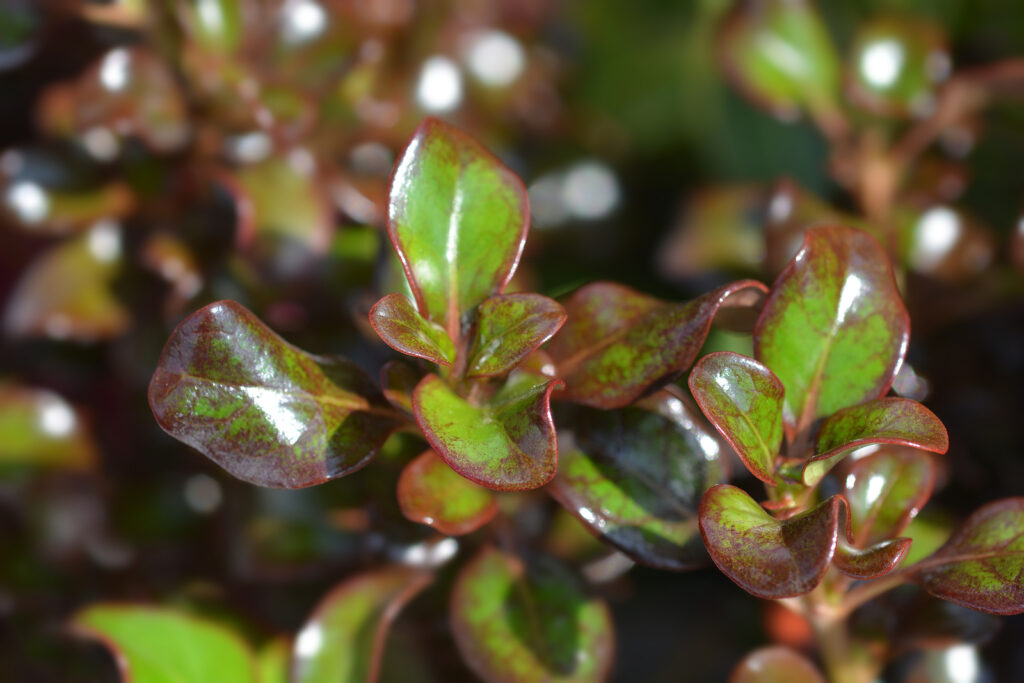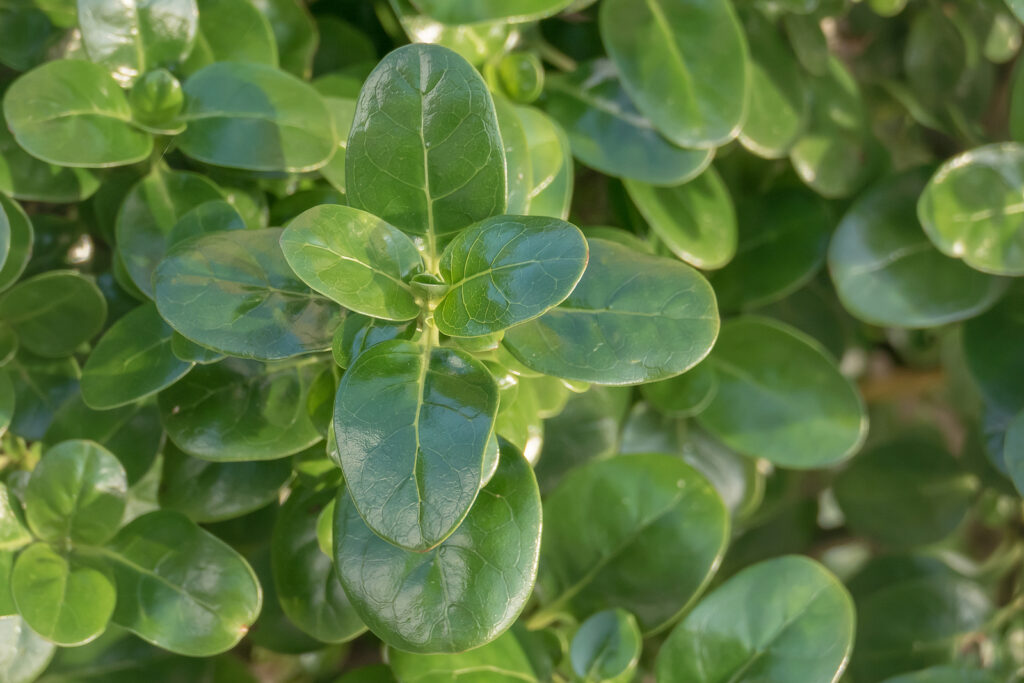Coprosma–sometimes called mirror plant–are evergreen shrubs and trees grown for their attractive glossy foliage and ability to thrive in difficult situations. Coprosma is relatively drought tolerant. It tolerates heat and cold and seaside locations.
There are many Coprosma hybrids. Some are small shrubs grown as groundcovers to about 12 inches tall; others are medium to tall growing shrubs from 4 to 10 feet tall and nearly as wide.
Many Coprosma hybrids are variegated. Leaf colors include dark green, lime green, yellow, orange, copper-bronze, and creamy white. Most Coprosma leaves are shiny and glossy giving Coprosma its common name mirror plant.
Coprosma can be grown in shrub borders, rock gardens, and some as house plants. Coprosma is nearly maintenance-free.
Coprosma is a genus of about 90 species of evergreen shrubs and small trees. There are numerous named cultivars. Coprosma is native to New Zealand, Australia, and Indonesia.

Get to know Coprosma
- Plant type: Evergreen shrubs
- Growing zones and range: Zones 8 to 10
- Hardiness: Hardy to Zone 8
- Height and width: Varies with variety; some grow 18 inches tall, others grow 4 to 10 feet tall and nearly as wide.
- Foliage: Linear to rounded, often leathery leaves are light to dark green, purple, or brown
- Flowers: Male and female flowers are borne on separate plants; female plants bear attractive small fruits when a male is nearby for pollination.
- Bloom time: Summer
- Uses: Hedge, screen, or espalier; spreading forms are used as ground covers or to hold banks.
- Common name: Coprosma, mirror plant, looking glass plant
- Botanical name: Coprosma
- Family name: Rubiaceae
- Origin: New Zealand
Where to plant Coprosma
- Plant Coprosma in full sun or partial shade.
- Grow Coprosm in rich garden soil; Coprosma prefers a neutral to acid soil.
When to plant Coprosma
- Set container-grown Coprosma in the garden in spring or autumn.
Planting and spacing Coprosma
- Space Coprosma 18 to 36 inches (45-91cm) depending on the variety.
How to water and feed Coprosma
- Coprosma need regular water as it get established; establshe plants need regular to little water.
- Fertilize Coprosma with an all-purpose, slow-release organic firtilizer in spring.
Coprosma care
- To prevent Coprosma from becoming leggy and unkempt give it a light purning twice a year. Avoid pruning Coprosma during the summer.
Coprosma pests and diseases
- Coprosma can suffer root rot in wet soil.
- Coprosma can be attacked by scale insects.

Coprosma propagation
- Sow Coprosma seeds in a container in a cold frame in spring.
- Root semiripe cuttings in late summer.
Coprosma varieties to grow
- Coprosma hybrids. There are several Coprosma hybrids. Most grow 4 to 5 feet tall and nearly as wide. ‘Evening Glow’ has glossy green leaves that are variegated gold during the growing season and turn orange-red in fall and winter. ‘Rainbow Surprise’ bears leaves variegated with cream and pink, washed with red in fall and winter. ‘Tequila Sunrise’ produces shiny green new growth, edged with gold; leaves gradually pick up shades of gold and orange before turning bright red and orange in winter. ‘Coppershine’ grows up to 6 feet tall; leaves are bright green heavily shaded with copper. New growth is even more heavily tinted; entire plant is bright copper in winter.
- C. x kirkii. Grows 1 to 3 feet tall and 4 to 6 feet wide; ½-2 inch narrow yellow-green leaves are closely set on stems; white fruits speckled red. Use as groundcover or bank cover; prune regularly to keep dense. Tolerates a range of soils; tolerates coastal winds, salt spray. ‘Variegata’ grows 6 to 24 inches tall and up to 5 feet wide; white-edged gray-green leaves and translucent white berries.
- C. petriei (C. pumila). Spreading, mounding plant grows 2 to 2 ½ feet tall and 6 to 8 feet wide; small, roundish oval leaves are bright shiny green. Tolerates more cold and heat than C. x kirkii. ‘Verde Vista’ (C. ‘Prostata’), a natural hybrid, is an improvement on the parent.
- C. repens (C. baueri). Mirror plant. Fast-growing to 10 feet tall and 6 feet wide; oval or oblong leaves are 3 inches long, 1 ½ inch wide, dark to light green, shiny and glossy; grows smaller near the seacoast conditions; can become straggly if neglected, prune twice a year to the desired height. Use as hedge, screen, informal espalier. Sometimes grown as a houseplant. Cultivars include ‘Argentea’, with green leaves flecked silvery white; ‘Marble Queen’ with creamy white leaves irregularly splashed and dotted with green; ‘Marble King’, with cream-colored leaves heavily speckled in lime green; ‘Picturata’, green leaves blotched creamy yellow in the middle; ‘Exotica’, female version of ‘Picturata’ with orange-yellow fruits; ‘Marginata’, with green leaves irregularly edged in creamy white; ‘Pink Splendor’, green leaves with yellow margin that takes on a pink edging with maturity.















